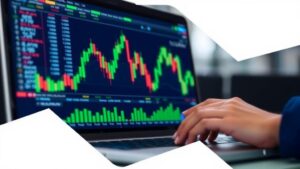Prompting Readers to Consider New Possibilities
What if your trading strategies could react in milliseconds? Algorithmic investing makes this possible—let’s explore the potential.
Understanding the Regulatory Landscape of Algorithmic Trading
In the rapidly evolving world of finance, algorithmic trading has emerged as a cornerstone of market activity. With algorithms executing trades at lightning speed, capturing minute price differences, and analyzing vast datasets, the landscape is both exciting and complex. However, alongside its growth, algorithmic trading faces an intricate web of regulations designed to maintain market integrity and protect investors. This article aims to explore the regulatory framework surrounding algorithmic trading, breaking down the significant components and implications for market participants.
Algorithmic trading, commonly referred to as “algo trading,” leverages sophisticated mathematical models and automated systems to execute trades. Over the past two decades, algo trading has transformed the trading landscape:
- Increased Efficiency**: Algorithms can analyze market conditions and execute trades within milliseconds.
- Reduced Costs**: Automated trading reduces the need for human intervention, leading to lower transaction costs.
- Market Liquidity**: Algorithms contribute to market liquidity by continuously buying and selling assets.
As algo trading continues to grow, it has garnered attention from regulatory bodies worldwide due to its potential implications for market stability.
Key Types of Algorithmic Trading Strategies
Before diving into the regulatory landscape, it’s essential to understand the various types of algorithmic trading strategies employed by traders and institutions:
- **High-Frequency Trading (HFT)**:
- Involves executing a large number of orders at extremely high speeds.
- Focuses on short-term market movements, often holding positions for seconds or milliseconds.
- **Statistical Arbitrage**:
- Utilizes statistical methods to identify price discrepancies between correlated securities.
- Aims to profit from mean reversion or convergence of prices.
- **Trend Following**:
- Algorithms identify and capitalize on sustained market trends.
- Trades are executed based on historical price data and indicators.
- **Market Making**:
- Involves placing buy and sell orders to facilitate liquidity.
- Traders profit from the bid-ask spread by continuously adjusting orders.
Understanding these strategies is crucial for grasping the regulatory measures that govern them.
Regulatory Bodies and Frameworks
The regulatory landscape for algorithmic trading is diverse, varying by jurisdiction. Here are some of the key regulatory bodies and frameworks influencing algo trading practices:
1. Securities and Exchange Commission (SEC) – United States
The SEC plays a pivotal role in regulating the U.S. securities markets, including algorithmic trading. Key regulations include:
- Regulation ATS**: Establishes a regulatory framework for Alternative Trading Systems (ATS), which include many algorithmic trading platforms.
- Market Access Rule (Rule 15c3-5)**: Requires broker-dealers to implement risk controls for algorithmic trading to prevent market disruptions.
2. Commodity Futures Trading Commission (CFTC) – United States
The CFTC oversees the derivatives markets, including futures and options, which can also utilize algorithmic trading. Important regulations include:
- Dodd-Frank Act**: Introduced measures to increase transparency and reduce systemic risk in the derivatives markets, affecting algorithmic trading strategies used in these areas.
3. European Securities and Markets Authority (ESMA) – European Union
In the EU, the ESMA sets regulations impacting algorithmic trading under the Markets in Financial Instruments Directive II (MiFID II):
- Algorithmic Trading Regulation**: Mandates firms using algorithmic trading to have robust risk management and monitoring systems in place.
- Tick Size Regime**: Affects the execution of trades based on price increments, influencing algorithmic strategies.
4. Financial Conduct Authority (FCA) – United Kingdom
The FCA regulates financial markets in the UK, including algorithmic trading. Key regulations include:
- FCA Handbook**: Contains provisions addressing high-frequency trading and ensuring firms maintain effective governance and controls.
Key Regulatory Challenges
The rise of algorithmic trading presents several regulatory challenges that authorities must address to ensure market integrity:
1. Market Manipulation
One of the primary concerns with algorithmic trading is the potential for market manipulation. Strategies like “quote stuffing” (placing a large number of buy orders to slow down competitors) can disrupt market operations. Regulators are focused on:
- Detection and Prevention**: Implementing surveillance systems to monitor trading activity for signs of manipulation.
- Penalties**: Imposing severe fines and sanctions on firms engaged in manipulative practices.
2. Systemic Risk
Algorithmic trading can contribute to systemic risk as interconnected trading strategies may lead to rapid market movements. Challenges include:
- Flash Crashes**: Instances where markets experience extreme volatility due to automated trading decisions.
- Liquidity Concerns**: Algorithms may withdraw liquidity during market stress, exacerbating volatility.
3. Data Privacy and Security
The reliance on data for algorithmic trading raises concerns about data privacy and cybersecurity. Regulators are increasingly focused on:
- Data Protection Regulations**: Ensuring firms comply with laws regarding the collection, storage, and usage of data.
- Cybersecurity Measures**: Mandating robust cybersecurity frameworks to protect trading systems from breaches.
Compliance and Best Practices for Firms
For firms engaged in algorithmic trading, adherence to regulatory standards is crucial not only for legal compliance but also for maintaining a competitive edge. Here are some best practices:
1. Robust Risk Management Framework
Establishing a comprehensive risk management framework is essential. Key components include:
- Pre-Trade Risk Checks**: Implementing controls to verify orders before execution.
- Post-Trade Analysis**: Reviewing trades to identify and mitigate potential risks.
2. Transparent Algorithms
Firms should ensure their algorithms are transparent and auditable. This can be achieved through:
- Documentation**: Keeping detailed records of algorithm design, strategies, and performance.
- Regular Reviews**: Conducting periodic assessments of algorithms to ensure continued compliance.
3. Training and Culture
Fostering a culture of compliance and ethical trading practices is vital. This can be achieved through:
- Employee Training**: Providing ongoing education on regulatory requirements and ethical trading practices.
- Encouraging Reporting**: Creating channels for employees to report suspicious activities without fear of retaliation.
Conclusion
As algorithmic trading continues to reshape the financial landscape, understanding the regulatory environment is crucial for market participants. The interplay between innovation and regulation presents both challenges and opportunities for firms engaged in algo trading. By adopting best practices and staying informed about regulatory changes, traders and institutions can navigate this complex landscape while contributing to a stable and transparent market.
Embracing the future of trading will require a commitment to regulatory compliance, ethical practices, and ongoing innovation. In doing so, the financial industry can ensure that algorithmic trading remains a powerful tool for efficiency and growth while safeguarding the interests of all market participants.



